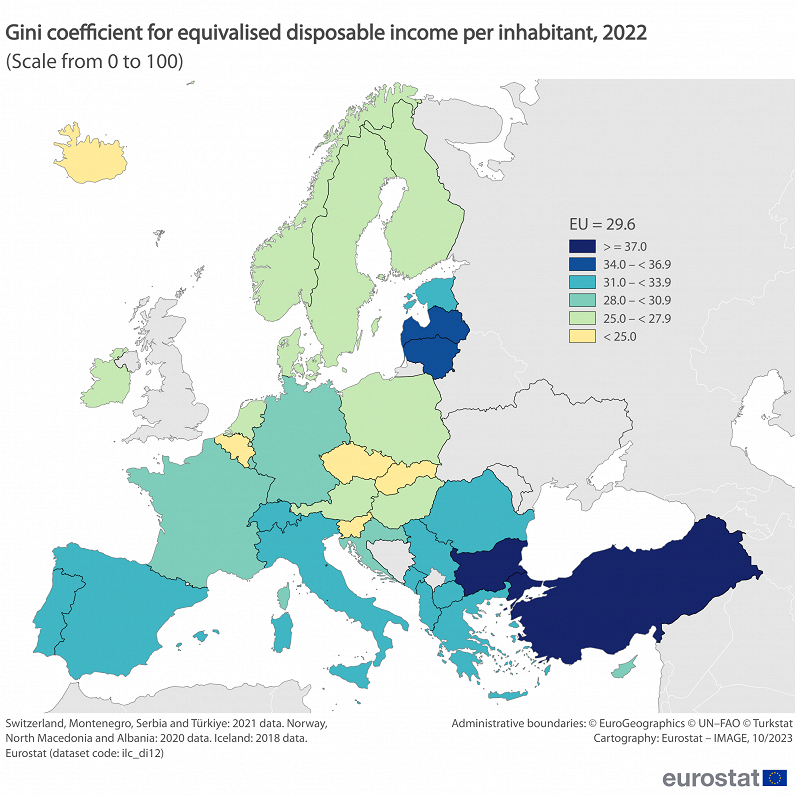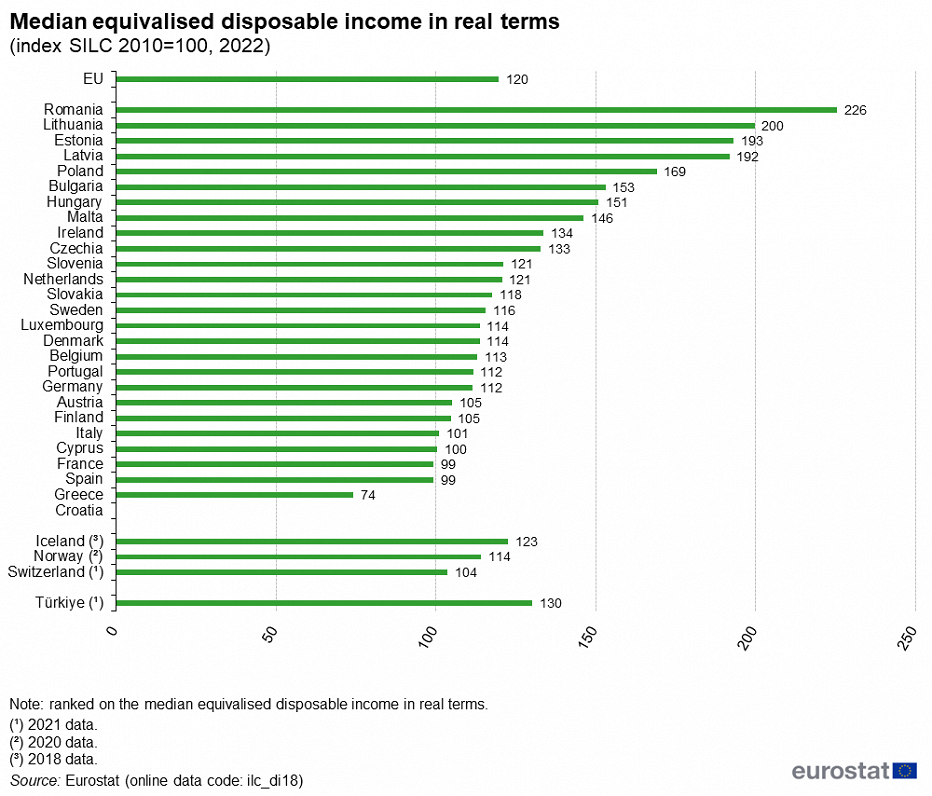The statistics use the well-known Gini coefficient methodology to give the extent to which the distribution of income within a country deviates from a perfectly equal distribution. A Gini value of 100 means that only one person receives all the income in the country, while a Gini value of 0 means that income is distributed equally across the population.
In 2022, the Gini coefficient for the EU as a whole was 29.6. The highest income disparities among the EU Member States were recorded in Bulgaria (38.4), Lithuania (36.2) and Latvia (34.3).
A group of Member States, with a Gini coefficient above the EU average of 29.6 and ranging between 31.0 to 33.9, comprised Malta, Greece, Estonia, Spain, Portugal, Romania and Italy.
In Croatia, Germany, Cyprus, Luxembourg and France, the Gini coefficients were close to the EU average, indicating income distributions consistent with the EU coefficient. At the other end of the scale, income was more evenly distributed in Slovakia, Slovenia, Czechia and Belgium, where the Gini coefficient was less than 25.0.

However, parallel statistics on disposable income showed some slightly more encouraging results. Income in real terms shows the annual evolution of households' purchasing power following the financial crisis of 2008. Conversion to 'real terms' is computed using, as a price deflator, the Harmonised Index of Consumer Prices (HICP) of the income year reflected in the median equivalised disposable income. The indicator is expressed as an index (with index at 100 for base year = SILC 2010).
In 2022, the disposable income in real terms in the EU was at an index of 120. This indicates that, on average, there has been a real increase of 20 % of the disposable income since 2010.
In the EU, most Member States reported a rise of the median disposable income in real terms. Romania led the real disposable income ranking with an index of 226, reflecting an increase of more than double since 2010. Lithuania was next with 200, followed by Estonia at 193 and Latvia at 192.
By contrast, Greece had the lowest index at 74, indicating a decrease from 2010. Spain and France were just below the 2010 benchmark at 99, while Cyprus matched it at 100, and Italy slightly surpassed it with 101.































